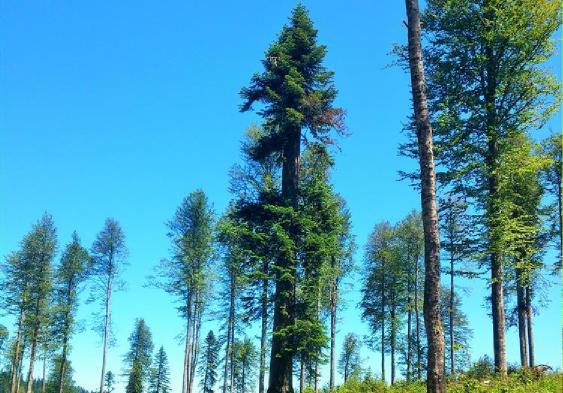Can the Pacific Fir Tree grow in North America? A tall, straight tree with a dense conelike crown. It will reach fifty metres once mature. Needles have blunt ends and are sometimes notched at the tip. they’re dark inexperienced with a groove on the side and have 2 silvery bands on the lower surface. The needles are organized in flattened, spray-like branches. The long needles unfold horizontally from very cheap and sides of the twig whereas the shorter ones on the highest purpose forward. Seed cones are deep purple and are command upright on branches at the top of the tree. The cones fall apart whereas still on the tree, going a central spike that’s visible into winter. spore cones are reddish. Bark, The bark is sleek and pale gray with blisters of pitch. It becomes scaly with age. wherever to search out amabilis fir, it’s sometimes found in coastal forests on top of three hundred metres elevation. within the north, it’s going to grow embarrassed level.
North American Fir Tree
Amabilis fir thrives in an exceedingly maritime climate, wherever it’s common in wet forests on deep, well-drained soils. it’s sometimes found in mixtures with western and mountain hemlock, yellow- cedar, and western redcedar. it’s very tolerant of shade, and little trees typically grow extravagantly with Gaylussacia baccata and mountain-heathers. Abies amabilis tolerates summer drought however depends on adequate wet throughout the first growing season. Seedlings develop long roots that penetrate compact soil but the foundation system can grow horizontally on poorly drained soils. North American Fir Tree >>
Several spruce species from the northeastern United States covers. Fir tree group, wood due to its design value Suitable for frame construction applications. Beam and other high structural constructions suitable for applications
What are Fir Trees good for in North America?

Fir is a kind of tree with coniferous leaves and is widely found in our country. The cone of the fir tree, the gum taken from the layer and the oil are used. The fir tree, which arouses curiosity with each part, takes its place among the herbal treatment methods. Fir oil obtained from the needles of this tree is suitable for human use and destroys many diseases when used correctly. These tall trees, which can stay green all four seasons, often resemble pyramids. It has the feature of branching from the top to very close to the ground. The fir cone formed on the branches of the tree is in a tone from light green to brown.
Fir trees, which usually grow more bushy in temperate climates, can live an average of 70 years.
How to Use Fir Gum? Fir gum is taken from the fir tree. To use this gum, it must be safely removed from the tree. Fir gum, which is used in the treatment of skin problems such as wounds and boils, has been preferred for centuries to heal skin damage. It is used as an ointment in cases such as redness. You can obtain fir gum, known for its antiseptic properties, from the natural environment or from herbalists.
Fir trees, which can be up to 40 meters tall, can be distinguished from other species of the Çamgiller family with their unique form, stem bark, needle leaves and even scent. There are white stripes on the underside of the leaves. When the cones mature in autumn, their scales are shed. There are 40 different species in the world, including North America.
